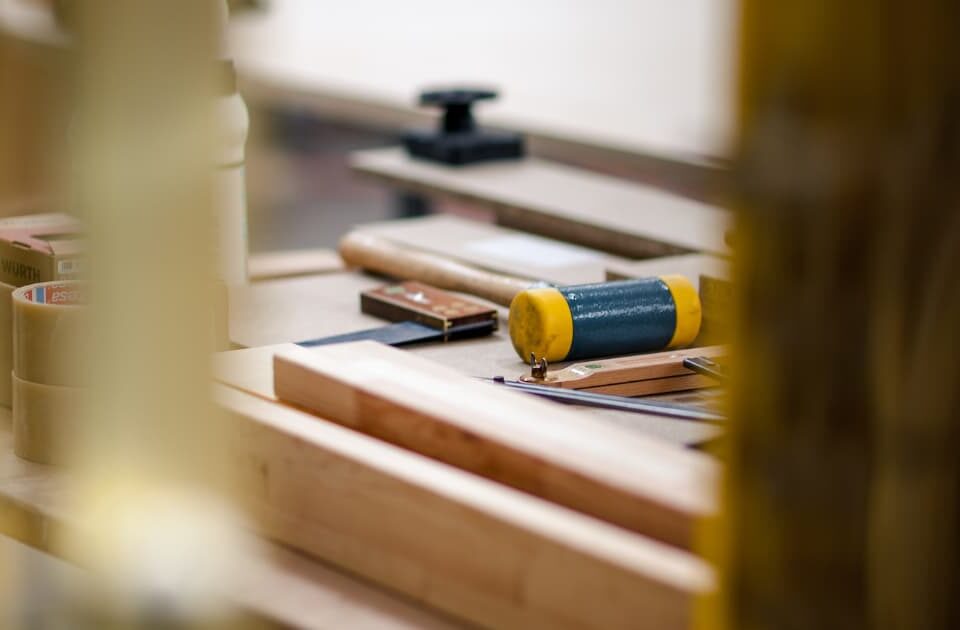Six Design Tips For The Perfect Home Office

Refresh Your Utility Room With These Top Tips
20th October 2019
Five of the Best Free Online Interior Design Tools
10th November 2019Over four million people work from home in the UK. It’s a figure likely to increase as technology makes it a more viable option for many. While working from home can be lonely, there are plenty of benefits too. Research shows that homeworkers are more productive and, despite working more hours, have lower levels of stress and anxiety than office workers.
The key to making working from home effective and enjoyable is designing the perfect home office. Creating a comfortable and functional workplace can be tricky, however, so many people opt to use an interior designer as a result.
For those who want to do it alone, we’ve come up with six tips that can help.
1. Location
The first thing anyone setting up a home office needs to do is decide where that office should be. If they have the space and the budget, this might mean an office garden for some. For others, it will mean converting an existing room in their house. The question is, which room? The most obvious answer is the quietest one, or the one furthest away from day-to-day family life.
If this room is small, however, there could be a problem fitting all the furniture and equipment in. This makes a larger room, even if it’s closer to communal or high-traffic areas, a better solution.
2. Size and Functionality
Office size and function go very much hand-in-hand. If a person’s work mainly involves sitting in front of a computer all day, for example, they might not need much space. If, however, they’re likely to find themselves elbow-deep in paperwork, they’ll probably need more. They’ll need the desk space to spread out. People also need to think about the equipment they’ll need including phones, printers and filing cabinets and where these will go. Are there enough power sockets, for example, for everything they need to plug in?
3. Health and Safety
People could use extension cords if there aren’t enough power sockets for their equipment. This might not be a problem. However, if sockets are over-loaded, this is a fire risk. And, if cables end up trailing across the office floor, there is a risk of trips and falls.
In an office environment, a Health and Safety Officer would check up on this. At home, it’s the job of the homeworker to make sure their home office is safe, for them and any family member who may use the room too.
4. Look and Feel

Once the practicalities of office design are sorted, people can start to think about how they want their office to look and feel. Personal taste plays a large part here, though people still need to remember that the room’s primary purpose is still as a place of work. Finding this balance starts with buying the best desk and office chair for their budget; these should be ergonomically designed to reduce injury.
Depending on the size of the office, people might want to think about choosing fitted office furniture. This will give a more corporate look than some might like. At the same time, however, people can be confident their furniture is fit for purpose. Remember, colour matters too, especially in small offices. Walls should be painted in shades that make a room feel light, bright and airy so you can be more productive. This means avoiding dark colours and large or bold prints which can be distracting.
5. Storage
There are some who say that a messy desk is a sign of genius. For most, however, it is the sign of someone who isn’t particularly organised. Or, it could be the sign of someone who just doesn’t have enough storage in their home office.
With office design, many people focus on the look and feel and the things they can see, like their office desk or chair. They forget they have to work in the space effectively, which is where storage comes in. This could be hanging files in desk drawers, bookshelves, filing cabinets or cupboards. It doesn’t matter as long as people have somewhere to put things they don’t need straight away.
For paperwork that can’t be hidden away, consider a noticeboard, which means desks are kept clutter-free.
6. Lighting
Finally, it’s important to think about office lighting. This can be natural light or come from overhead lighting and desk lamps. Ideally, the more natural light you can get the better, though it isn’t always possible, especially if working in the evenings. If possible, you may consider adding an extra window or skylight to the room.
At the same time, natural light can cause glare with computers, so it’s important to think about where the light will fall and place furniture and equipment appropriately.




